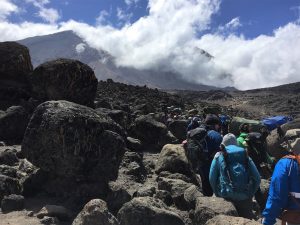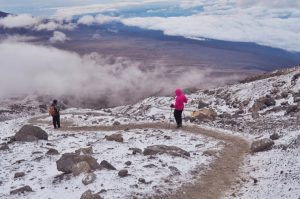Age of Ngorongoro Crater: A Geological Insight
Geological Origins of Ngorongoro Crater
The Ngorongoro Crater, located in Tanzania, is a natural wonder that captivates all who visit it. This geological marvel is actually a large volcanic caldera, formed over two million years ago during the eruption of a massive volcano. The crater is approximately 610 meters deep and covers an area of 260 square kilometers, making it one of the largest calderas in the world.
The geological origins of the Ngorongoro Crater can be traced back to the early stages of the Great Rift Valley, a tectonic feature that stretches from East Africa to the Middle East. The volcanic activity that led to the formation of the crater was part of the East African Rift system, which is still active today. The Ngorongoro volcano was once taller than Mount Kilimanjaro, but it eventually collapsed in on itself, creating the vast caldera that we see today.
The crater is home to a diverse range of habitats, from lush forests to open grasslands, and is teeming with wildlife. The unique geography of the crater, combined with its high walls and limited access points, has created a natural enclosure that supports a thriving ecosystem. Visitors to the Ngorongoro Crater can expect to see a wide variety of animals, including lions, elephants, rhinos, and hippos, in their natural habitat.
Uncovering the Age of this Natural Wonder
Determining the age of the Ngorongoro Crater is no easy task, as it involves a combination of geological, paleontological, and geochemical techniques. One method used to estimate the age of the crater is radiometric dating, which measures the decay of radioactive isotopes in volcanic rocks. By analyzing samples taken from the crater walls and surrounding areas, scientists have been able to determine that the Ngorongoro Crater is approximately two million years old.
In addition to radiometric dating, researchers have also studied the fossils found within the crater to gain insight into its age. By dating the remains of ancient plants and animals that once lived in the area, scientists have been able to refine their estimates of when the crater was formed. These findings have helped to paint a more detailed picture of the geological history of the Ngorongoro Crater.
The age of the Ngorongoro Crater is a testament to the incredible forces of nature that have shaped our planet over millions of years. As one of the most unique and well-preserved calderas in the world, the Ngorongoro Crater offers a rare glimpse into the geological processes that have shaped the landscapes we see today.
If you are interested in experiencing the geological wonders of the Ngorongoro Crater for yourself, consider booking a tour with Sunset Africa Safari. For booking requests and more information, please contact info@sunsetafricasafari.com.



